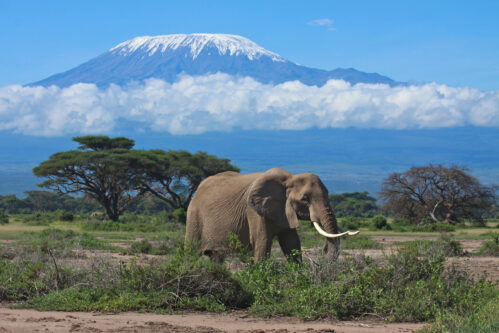
Introduction:
Mount Kilimanjaro, Africa’s highest peak, stands tall at 5,895 meters (19,341 feet) above sea level. This dormant volcano in Tanzania attracts thousands of adventure-seekers each year, eager to conquer its majestic summit. But when is the best time to climb Kilimanjaro, and how can you make the most of your journey? In this blog post, we’ll explore the optimal climbing seasons and provide essential tips for a successful and unforgettable experience.
Best Times to Climb:
Kilimanjaro can technically be climbed year-round, but certain months offer more favorable conditions. The mountain experiences two primary seasons: the dry season and the wet season.
1. Dry Season (June to October & January to February)
The dry season is considered the best time to climb Kilimanjaro. During these months, precipitation is minimal, and the trails are generally drier and less slippery. The skies tend to be clear, providing stunning views and ideal temperatures for trekking. The peak season falls between July and September, during which the mountain sees the highest number of climbers.
2. Wet Season (March to May & November to December)
Climbing during the wet season is more challenging due to heavy rains and potential snowfall at higher altitudes. The trails can be muddy and slippery, making the ascent more difficult. However, if you’re up for a less-crowded experience and are well-prepared for adverse weather conditions, the wet season may be a suitable option.
Tips for a Successful Climb:
1. Choose the right route: Kilimanjaro offers six different routes, each with its own level of difficulty, duration, and scenery. Carefully research each option and select the one that best suits your experience, physical fitness, and preferences.
2. Train ahead of time: Climbing Kilimanjaro is a physically demanding endeavor. Start training months in advance with a mix of cardio, strength, and endurance exercises. Incorporate hikes with a loaded backpack to simulate the conditions you’ll face on the mountain.
3. Acclimatize properly: Altitude sickness is a significant concern on Kilimanjaro. Choose a route that allows sufficient time for acclimatization and follow a gradual ascent profile.
4. Pack wisely: Bring appropriate clothing and gear for the various weather conditions you may encounter, such as waterproof and breathable layers, sturdy hiking boots, and a high-quality sleeping bag.
5. Hire a reputable tour operator: Choose an experienced, ethical, and reliable tour operator with a proven track record of success. They will provide the necessary support, guidance, and safety measures to help ensure a successful summit.
6. Stay healthy and hydrated: Maintain proper hygiene, eat nutritious meals provided by your tour operator, and drink plenty of water throughout your trek.
Conclusion:
Climbing Mount Kilimanjaro is a bucket-list adventure that requires thorough preparation and planning. By choosing the dry season for your trek, selecting the appropriate route, training in advance, and following essential tips, you’ll improve your chances of a successful and unforgettable experience.